
Indications
Choosing the correct hearing implant system for your patient is vital to ensuring their hearing future. However, determining the appropriate hearing implant is not always a straightforward process. This overview is designed to be a resource about the different types of hearing loss and the specific hearing implants that best treat each type.
If you have any further questions regarding indications, please don’t hesitate to contact your MED-EL representative.
Candidate Selection Tool
Easily navigate candidacy guidelines using our interactive Candidate Selection Tool. This easy-to-use app uses simple yes/no questions to suggest appropriate MED-EL solutions for each candidate’s specific needs. No login or installation required—try it now!
The products described on this page are subject to regulatory approval prior to marketing in your market; some features may be currently unavailable or not for sale by MED-EL in your region. Please check with your local MED-EL representative for product availability.
Severe-to-Profound Sensorineural Hearing Loss
SYNCHRONY
Cochlear Implant System
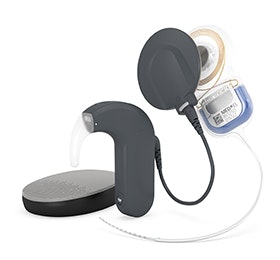
- Indication of severe-to-profound sensorineural hearing loss with hearing thresholds that fall within the shaded area in the chart
- Functional auditory nerve
- Prior use of optimally fitted hearing aid, if appropriate
- Little or no benefit from acoustic amplification
- Adequate motivation and expectations
High-Frequency Sensorineural Hearing Loss
SYNCHRONY EAS
Electric Acoustic Stimulation
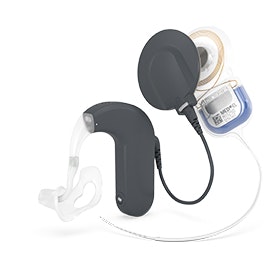
- Indication of high-frequency hearing loss, with hearing thresholds that fall within the shaded area in the chart
- Monosyllable score ≤60 % at 65 dB SPL in best aided condition
- No rapid progressive hearing loss
- No air-bone gap >15 dB
- No malformations or obstructions of the cochlea, no otosclerosis or ossification, or external ear contraindications
- Adequate motivation and expectations
Mild-to-Severe Sensorineural Hearing Loss
VIBRANT SOUNDBRIDGE
Active Middle Ear Implant System
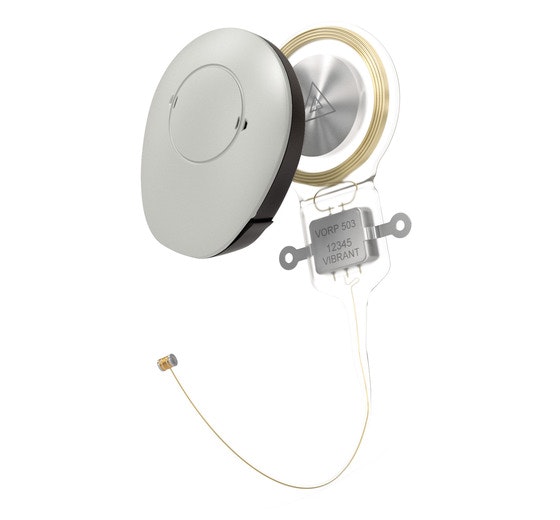
- Indication of mild-to-severe sensorineural hearing loss, with stable air conduction thresholds that fall within the shaded area in the chart
- Age 5 years or older
- Normal middle ear functions as shown by audiometric thresholds and impedance measurements
- Speech audiometry curve adequate to the respective PTA with speech understanding of at least 50 % at MCL with headphones in open-set word test
- Ability to benefit from amplification
- Absence of retrocochlear and central auditory disorders
- Adequate motivation and expectations
Conductive and Mixed
Hearing Losses
VIBRANT SOUNDBRIDGE
Active Middle Ear Implant System

- Indication of conductive or mixed hearing loss, with stable bone conduction thresholds that fall within the shaded area in the chart
- Age 5 years or older
- Absence of active middle ear infections
- Ear anatomy that allows the FMT to be positioned on a suitable vibratory structure
- Ability to benefit from amplification
- Absence of retrocochlear and central auditory disorders
- Adequate motivation and expectations
BONEBRIDGE
Active Bone Conduction Implant System

- Indication of conductive or mixed hearing loss as indicated by audiometric testing, with bone conduction hearing thresholds that fall within the shaded area in the chart
- Age 5 years or older
- Anatomy that allows appropriate placement of the implant
- Absence of retrocochlear and central auditory disorders
- Adequate motivation and expectations
ADHEAR
Non-Surgical Bone Conduction System

- Indication of unilateral or bilateral conductive hearing loss, either chronic or temporary, with bone conduction hearing thresholds that fall within the shaded area in the chart
- No age limit
Passive Middle Ear Implants
Tympanoplasty and Stapes Prostheses

- Indication of conductive hearing loss due to a malfunction of the ossicular chain (such as chronic otitis media, cholesteatoma, trauma, or malformations)
- Indication of conductive hearing loss due to a stapes defect (such as otosclerosis, congenital fixation of the stapes, trauma, or malformations of the ossicular chain or middle ear)
Single-Sided Deafness
SYNCHRONY
Cochlear Implant System

- Indication of sensorineural hearing loss in the affected ear, with hearing thresholds that fall within the shaded area in the chart
- Indication of normal hearing or mild-to-moderate hearing loss in the contralateral ear, with hearing thresholds that fall within the shaded area in the chart
- Functional auditory nerve
- Prior use of optimally fitted hearing aid, if appropriate
- Little or no benefit from acoustic amplification
- Adequate motivation and expectations
BONEBRIDGE
Active Bone Conduction Implant System

- Indication of sensorineural hearing loss in the affected ear, with hearing thresholds that fall within the shaded area in the chart
- Indication of normal hearing in the contralateral ear, with hearing thresholds that fall within the shaded area in the chart
- Age 5 years or older
- Anatomy that allows appropriate placement of the implant
- Absence of retrocochlear and central auditory disorders in the contralateral ear
- Adequate motivation and expectations
ADHEAR
Non-Surgical Bone Conduction System

- Indication of sensorineural hearing loss in the affected ear, with hearing thresholds that fall within the shaded area in the chart
- Indication of normal hearing in the contralateral ear, with hearing thresholds that fall within the shaded area in the chart
- No age limit
Retrocochlear Hearing Loss (Neural Hearing Loss)
SYNCHRONY ABI
Auditory Brainstem Implant System
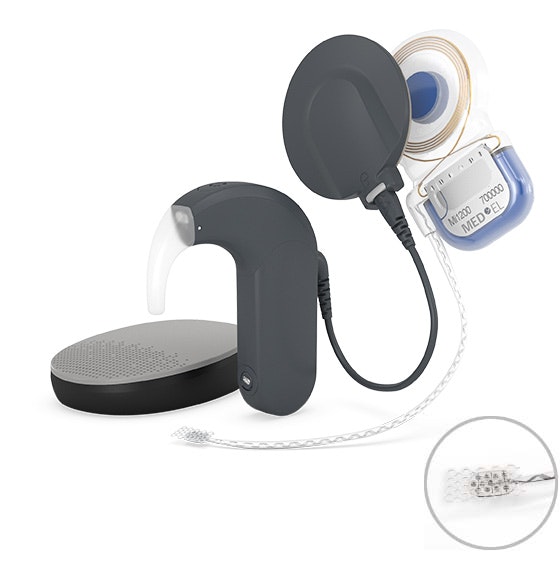
- 12 months or older in case of:
- No benefit from a CI system
- Non-functional auditory nerve
- Auditory nerve aplasia
- Auditory nerve hypoplasia
- Head trauma
- Non-NF2 tumor
- Severe cochlear ossification
- 15 years or older in case of:
- Non-functional auditory nerves on both sides
- Neurofibromatosis type 2 (NF2)
- Tumors are removed during ABI implantation
- Non-functional auditory nerves on both sides
- Adequate motivation and expectations
Contact Us
Have a question about candidacy for our hearing systems?
Let us know and our experts will work with you to determine what solutions can be the best options for your patients.



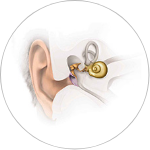
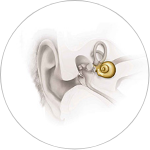
.png?auto=format&sfvrsn=ae4f4e42_2)
.jpg?auto=format&sfvrsn=49cefe43_2)
.jpg?auto=format&sfvrsn=4acefe43_2)
.jpg?auto=format&sfvrsn=7ccefe43_2)
.jpg?auto=format&sfvrsn=4bcefe43_2)
.jpg?auto=format&sfvrsn=7fcefe43_2)
.jpg?auto=format&sfvrsn=7dcefe43_2)
.jpg?auto=format&sfvrsn=48cefe43_2)
.jpg?auto=format&sfvrsn=4ccefe43_2)
